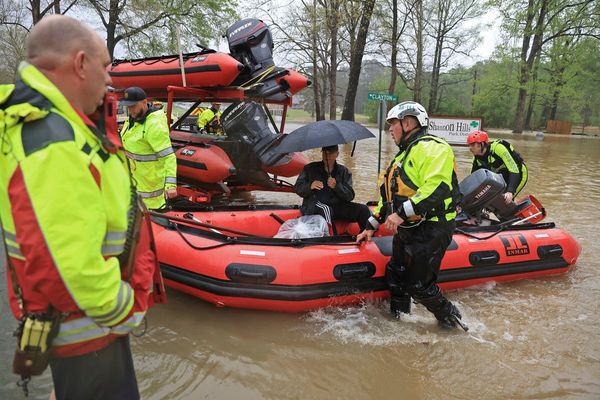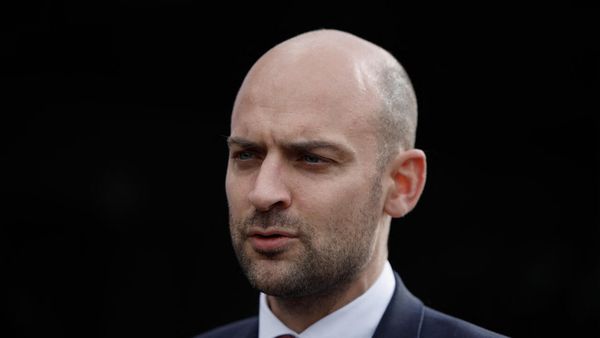The rolling hills, red dirt, and wild horses of the Central Australian desert are about as far from Sydney Harbour as you can get.
But Western Aranda artists from the community of Ntaria, also known as Hermannsburg, west of Alice Springs will soon have their country and stories front and centre in a new expansion of the Art Gallery of New South Wales (AGNSW).
The Yiribana gallery, until now found on the bottom floor of the gallery, has been relocated as part of the $344 million Sydney Modern Project to become the first gallery visitors encounter in the new building.
The new display is inspired by a word from the Sydney language, burbangana, meaning to "take hold of my hand and help me up", and will feature more than 160 works from Indigenous artists across Australia.
Growing up in a tiny desert community known as an outstation, Abel Pareroultja remembers watching his father catching and breaking in feral horses.
"You'd chase them with a car, stay in the creek, put up a pen, sleep over, and catch all the wild horses in the creek," he said.
"It's a very good, quiet place. You can get away from the community."
Outstations like 8 Mile, where Mr Pareroultja grew up, are small, remote communities — also known as homelands — where Aboriginal people have traditional ownership or historical association.
They are the focus of the works by eight artists from the Hermannsburg Potters, to be featured in the first exhibition in the new Yiribana gallery, which opens on December 3.
The Potters are known for their vivid ceramic depictions of desert life, from cowboys to native birds, bush tucker to swimming children, and the changing colours of the landscape.
For Beth Inkamala, Alkngarintja outstation, on her mother's country west of Hermannsburg, is a place she goes to connect with her family.
"It's really beautiful," Ms Inkamala said.
"We stay with family, together — my mum and dad, aunty and uncles, my partner and the kids; we take the kids for a holiday and come back when school starts.
"[The kids] love it — driving out for bush tucker, looking at the horses, the camels and the little donkeys.
"I tell them it's good for them to know the place and think about how we used to grow up here, walking around, going down the creek."
The outstations theme was chosen by the Hermannsburg artists for their contribution to the new Yiribana display, which also features artists from the Wiki and Kugu arts centre in Far North Queensland, Yirrkala and Milingimbi in north-east Arnhem Land, the Anangu Pitjanjatjara Yankunytjatjara lands, as well as New South Wales.
"It's an amazing group of works that really touches on the personal connections of the artists to particular outstations that they're really intimately connected to," AGNSW Aboriginal and Torres Strait Islander art curator Cara Pinchbeck said of the potters' work.
New place marks a 'celebratory moment' for Indigenous art
Since the Yiribana gallery opened in 1994 on the bottom floor of the AGNSW, the gallery "has long acknowledged that the space the gallery was in wasn't ideal", Ms Pinchbeck said.
"In the development of the new building, a conscious decision was made to relocate the Yiribana gallery, so it is the first gallery you see once you enter."
She said the move was an acknowledgement of the growing appreciation for Aboriginal and Torres Strait Islander art and "recognises its importance".
"We're hoping that it's a really celebratory moment … when so many artists from across the country, whether that be in Central Australia, northern Australia, or even here in Sydney, that their words can all come together and highlight to people the strength of our culture," Ms Pinchbeck said.
Beth Inkamala said she hoped visitors to the gallery would enjoy seeing her pots, but the biggest satisfaction for her came from seeing her stories come to life in clay.
Remembering the outstations "makes you feel good and happy", she said.
Mr Pareroultja said he began learning pottery and painting in prison, and he was driven to build on his skills on the outside since he was released in January.
"This is a pot that I've made to share," Mr Pareroultja said.
"People are going to look [at] my heart; maybe they'll feel good to see my pots.
"I'd like to go and see Sydney. I'm very excited to go there."







